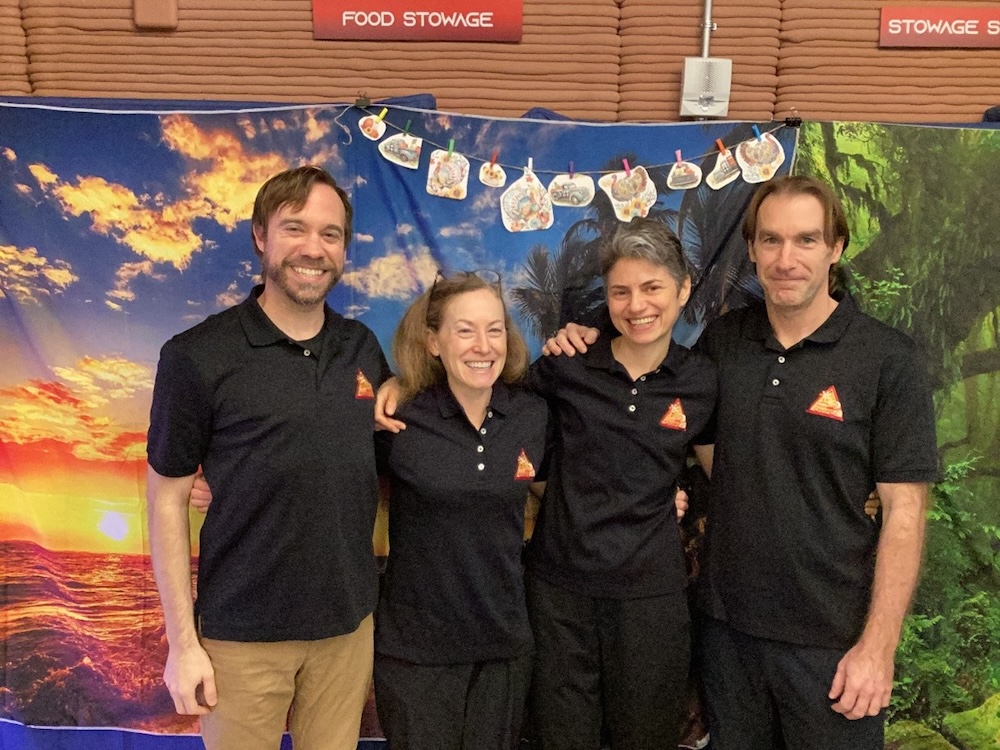Spending over a year physically isolated from everyone but three crewmates may not be most people’s idea of a fun getaway, but Anca Selariu wouldn’t hesitate to do it again.
“Absolutely,” Selariu tells Popular Science.
The US Navy microbiologist specializing in viral vaccine discovery and infectious disease research exited Mars Dune Alpha, NASA’s 3D-printed habitat located at the Johnson Space Center on July 6 after spending 378 days living and working inside the 1,700-square-foot structure with three teammates. Selariu served as the first science officer during the agency’s inaugural Crew Health and Performance Exploration Analog (CHAPEA-1) mission intended to simulate what it may be like to maintain humanity’s very first permanent base on Mars.
While there, Selariu and her three colleagues oversaw a broad range of responsibilities including crop management, geological sampling and analysis, robotics work featuring drones and rovers, as well as the many other maintenance tasks required for simulated Martian living. There were even mock excursions in modified spacesuits using an artificial Red Planet set room. Unsurprisingly, Selariu’s team amassed mountains of information after more than a year of experiments, troubleshooting, and adaptation.
 Two bunk rooms in CHAPEA Mars Dune Alpha. Credit: NASA / CHAPEA / Bill Stafford
Two bunk rooms in CHAPEA Mars Dune Alpha. Credit: NASA / CHAPEA / Bill Stafford
“The amount of data coming out of the CHAPEA study itself is going to be amazing. It’s a highly integrated and preloaded [set] of experiments where lots of groups contributed,” Selariu says, adding that, “It was absolutely fascinating to see how many thoughts, components, pieces of the puzzle you need to put together to start filling the gaps that we need to cover.” Ironically, however, conveying all those results and experiences in real-time proved more difficult than anything else.
“The most challenging aspect, although it doesn’t sound like it, was the communication delay,” she explains.
Even with data traveling at the speed of light, any future chatter between Earth and Mars will take a frosting amount of time given the average distance of 140 million miles between the two planets. Every message will involve a 22-minute journey each way, meaning that even the most basic back-and-forths will turn into almost-hour-long processes. So, for the purposes of CHAPEA-1, every message sent between NASA and Mars Dune Alpha inhabitants was artificially delayed by the same amount of time.
“[It] requires a completely different mindset for how you formulate the communications, how you deliver it, the correct timing,” Selariu recalls. “It’s so interesting because this is a unique type of challenge for modern humans. Most humans nowadays do not know what it’s like to live like that. They don’t know what it’s like to live offline.”
Selariu explains that unlike an unplugged, week-long getaway in the woods, the extended isolation and conversational delay made for an entirely different psychological experience.
“In reality, it’s a lot more complex, especially for something of such long duration. There are so many things that you need to prepare for, so many things that you don’t think about until you actually experience them firsthand,” she says. “For me, it was one of the most rewarding things to live, myself.”
That isn’t to say it was all frustrations and impatient foot-tapping. Before moving into CHAPEA, the crew made sure to upload a massive library of books and prerecorded media to enjoy during their off-hours. Selariu particularly loved the marathon movie and TV sessions, as well as game tournaments.
NASA’s current timeline likely won’t see any humans landing on Mars until the 2040s. But if astronauts do actually eventually arrive at that historic moment, it will be in no small part thanks to the experimental work of researchers like Selariu.
 CHAPEA-1 crew, from left to right: Nathan Jones, Kelly Haston, Anca Selariu, and Ross Brockwell. Credit: NASA / CHAPEA
CHAPEA-1 crew, from left to right: Nathan Jones, Kelly Haston, Anca Selariu, and Ross Brockwell. Credit: NASA / CHAPEA
“Just being a part of human space exploration, especially in the effort of getting humans to Mars, is an incredible honor to me. It’s just amazing to be able to wake up every day knowing that you’re contributing to humanity’s dream,” she says. And although she only simulated the Mars experience, the yearlong trip put the enormity of our own home planet and its delicate balance into perspective.
[Related: How to apply for NASA’s next Mars habitat simulation.]
“The opportunity of being ‘away’ from Earth is very enlightening. It makes you realize how precious everything is. The fact that so many things can happen on Earth that cannot happen elsewhere is just incredible,” says Selariu, noting the planet’s biodiversity, natural complexities, and even the simple existence of water.
“All of these things make you think about how extraordinary it is to be a human witnessing this,” she adds.
With CHAPEA-1 officially in the books, NASA is already looking for volunteers to participate in its next extended simulation mission. For anyone interested, Selariu encourages them to “keep on dreaming.” There are plenty of issues to still examine and problems to solve before lifting off for Mars, after all. But if on the off-chance NASA bumps up its travel plans, there’s at least one person with not only the most comparable experience, but the willingness to put their practice into action.
“I would definitely not say no,” Selariu says. “Every time I see Mars in a picture I get a little misty-eyed, to be honest with you.”
>>> Read full article>>>
Copyright for syndicated content belongs to the linked Source : Popular Science – https://www.popsci.com/science/mars-habitat-interview-anca-selariu/































